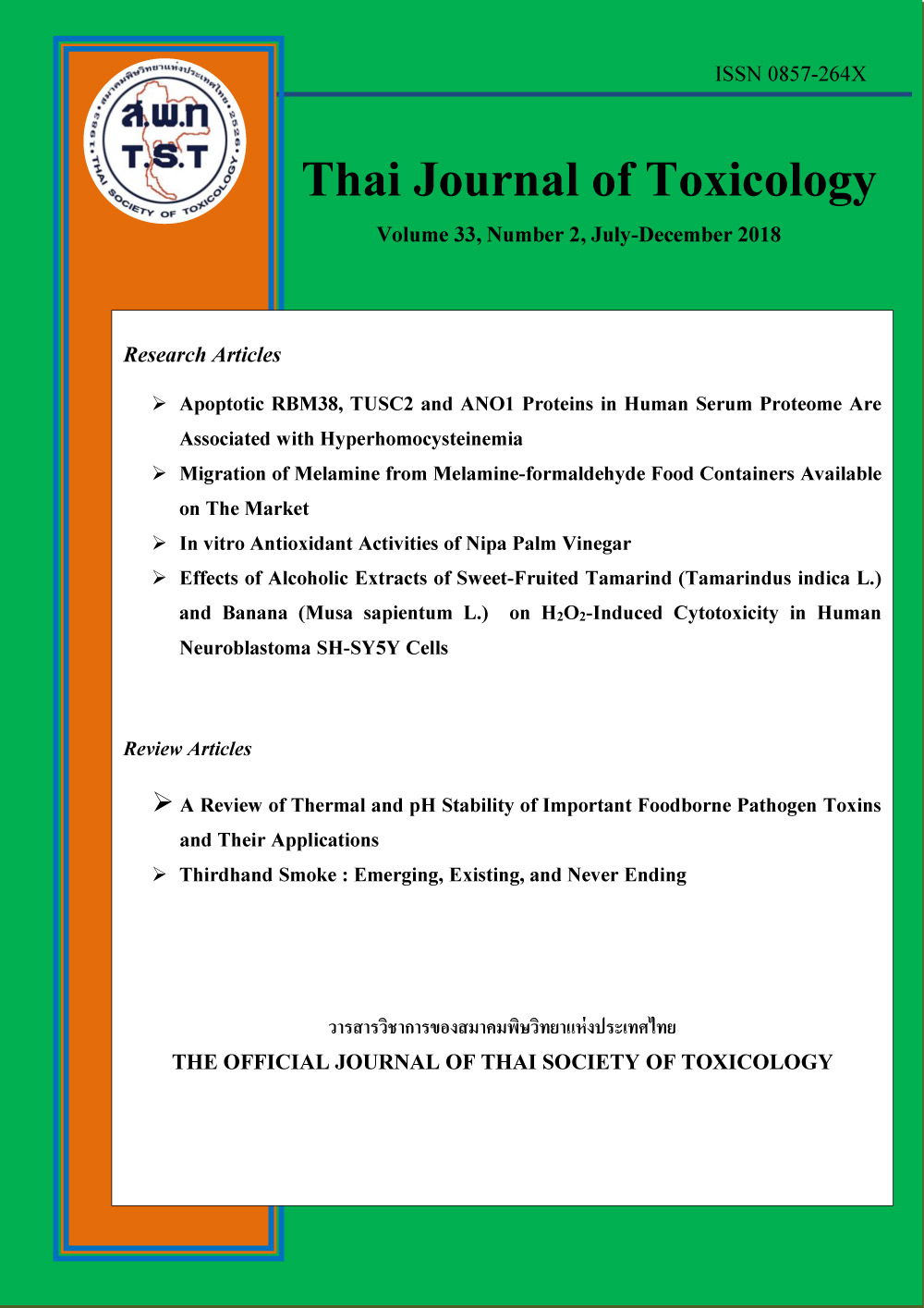Apoptotic RBM38, TUSC2 and ANO1 Proteins in Human Serum Proteome Are Associated with Hyperhomocysteinemia
Main Article Content
Abstract
Hyperhomocysteinemia (HHcy) is known as an independent risk factor for cardiovascular diseases. It can induce apoptosis of vascular smooth muscle cells. Currently, proteomic has been widely applied in scientific and clinical researches. This research is a preliminary study that used proteomic technique for comparative protein expressions with focusing on the molecular basis of CVD in HHcy condition. The aim of this study was to identify protein profiles between control (non-HHcy) group and three groups of HHcy. Chemiluminescense immunoassay was used for determination of plasma homocysteine levels. Protein expressions in human serum were determined and analyzed by gel electrophoresis and LC/MS-MS technique. Proteins were quantified by using DeCyderMS analysis software. Jvenn was used for comparing protein lists with venn diagram. Function and class of protein were demonstrated by using PANTHER software. The interaction of chemical and protein was predicted by using STITCH V.5.0. Eight unique proteins were up- regulated in hyperhomocysteinemia groups, including MUC-19, LPAR1, MAPO2, GPALPP1, FECH, TUSC2, RBM38 and ANO1. Notably, RBM38, TUSC2, and ANO1 found in subjects with plasma homocysteine levels more than 50 μmol/L were discovered and linked to CVD risks via apoptotic signaling pathways. This study provided better insight into the interaction between expressed proteins profiles after post-translational modification which may resulted in induction of physiological alteration that may related to homocysteine- induced CVD.


